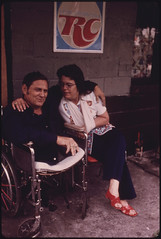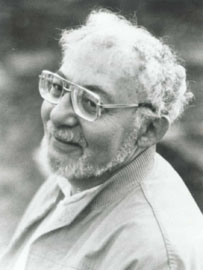I miss the
FWD blog for all kinds of reasons, but one of the features they did really well was "
Dear Imprudence," reviewing advice columnists' advice on matters pertaining to disability. Now, I don't claim to have anything like their wealth of insight on the subject, but you don't need
much insight to realize that
today's Ask Amy advice is just wrong.
The question comes from a woman who uses a wheelchair (she explains that her mobility is affected by multiple sclerosis). Her son is getting married soon, and she wants to know how they can handle the mother-son dance at the reception. So far so good. Reasonable question, especially if she hasn't ever been in a dancing situation while using a wheelchair before. And a mother-son dance is already kind of an anxious-making situation--how many times in life are you dancing with your son, while a room full of all the people you love just watch?
Amy starts off okay--she asks a spokeswoman from the National MS Society to comment. That person just encourages the mother to have fun and enjoy the music:
"When we have events with dancing, people in wheelchairs treat the wheelchair as their legs. A wheelchair can easily move to and fro to the music. Your son can spin you about and you can even circle around him in your chair. Just think of your chair as your chariot. The key is to take this with a bit of grace and humor. The chair is the tool for you to enjoy the music and the key is to have fun."
Fine, for a soundbite--nice note of reassurance that there are plenty of times that people use wheelchairs on a dance floor. And Amy could have stopped there, and all would be okay, but she decided to add her own suggestion:
Your son might want to show his solidarity to his mom by borrowing a wheelchair for his own use during this special dance with you. He could appoint two ushers to wheel you both in a lightly-choreographed duet. You'd have to work this out ahead of time, practice a little, and make sure everyone involved was sober.
Uhhhhhhhhh....... this is a bad, bad idea, Amy, for a lot of reasons. First, the son wouldn't be showing "solidarity" by borrowing a wheelchair (and from whom, exactly?). The mother doesn't sound like she needs any gestures of "solidarity," anyway; what she needs is a dance partner. If she doesn't know how to dance in a wheelchair, and he doesn't know even how to
use a wheelchair, then two wheelchairs digs them even further into confusion, no?
Appointing ushers to wheel you both... oh my. The mother of the groom may well wheel her own chair ordinarily--she doesn't say in the letter. If so, it's weird to suggest that she not do so for the dance. The idea of rounding up two random ushers to make a
pas de quatre (?), well.....now they'd have four people on the dance floor who don't know what to do--and the whole mother-son dance aspect is out the window. Oh, but it will be "lightly choreographed." They'll "practice a little" and "make sure everyone is sober." Sure. Dancing gracefully together for an audience only requires a little planning and a blood alcohol level below .08. Right?
Grrrrr. I was at least happy to see that the very first comment called Amy's advice "tacky," "condescending," and "mocking." Right on, and then some.
 Ink would probably make this an illegal device in a lot of cities; but that post also links to a vimeo video, called "Tricycle Calligraphy," where Nicholas Hanna is doing a very similar thing in China, but with water as his "ink"--the lettering is only visible until it dries.
Ink would probably make this an illegal device in a lot of cities; but that post also links to a vimeo video, called "Tricycle Calligraphy," where Nicholas Hanna is doing a very similar thing in China, but with water as his "ink"--the lettering is only visible until it dries.














